Back to Good Books
An Interview With Nuccio Bertone
By Mike Riedner and Ulrich Bethscheider-Kieser
(Originally published in German Motor Klassic magazine in April 1994 and translated from German by Peter Pleitner)
In 1912 his father, Giovanni, founded a coach building firm. His son, the late Nuccio Bertone, developed the family business into a design house next door to the Italian auto industry. At the time of this interview he was still in the daily habit of going to work in his office — even though on July 4th he’d be celebrating his 80th birthday. Nuccio’s last public appearance was in April of 1996 at the Turin Auto Show. He died in Turin February 25, 1997 at the age of 82.

Nuccio Bertone honored at
Pebble Beach (1989)
Around the world your name is identified with automobile design, although your training is in accounting. Did you originally plan for a different career?
As I left school, my parents had no one to keep the company books. Consequently I chose my professional development to be in accounting and management. I did not particularly enjoy this line of work. Above all else my passion was in design. This passion evolved naturally as I grew up surrounded by my father's creations on the chassis furnished by Fiat, Alfa Romeo, and foreign manufacturers. Before WWII, our plant's output was in the neighborhood of 5,000 vehicles per year. As a boy I was lucky to have been able to experience all the steps involved — from the concepts to the finished product.
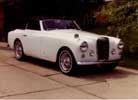
1953 Arnolt MG-TD
Convertible
Were there particular things you looked forward to changing once you entered the family business?
In the beginning I followed my father’s lead, because after all, he had founded the business and developed it in a certain direction. But back then coachwork was based on wooden models. On these we would hammer-form the sheet metal, and the completed bodywork would then be bolted to the frame. Deliveries were made primarily to Lancia and Fiat. The era of this system of production was however becoming outmoded. But the most important thing for me was a certain fantasy that accompanied each delivery — a quality that was expected by our select clients.

1954 Arnolt Aston Martin
DB-2/4
How would you today describe your father and son Bertone relationship then?
My relationship with my father was quite good, especially so because I would only consider changes to the business very carefully and of course would not think of changing anything too quickly. My father entrusted me with special projects from the start. Like all bodybuilders, he never had the intention of building a complete automobile. But his ego always demanded that his work portray qualities which would be noticed. Even before the war, custom coach work became too expensive for most clients. In addition, the quality of serial production cars started to approach that of custom cars. I determined that there was no future in delivering one-of creations for individual clients, that it was time to work with the automobile manufacturers.

Aston Martin DB-2/4
(Photo by Tim Cottingham)
Which direction did you then take?
What I now needed was a new production basis. I bought drivable chassis from Fiat, Lancia, and Alfa Romeo. On these chassis I would build bodies that would appeal to a larger set of clients. From these models I would create a number of variants, as it is still done today. We would first create the base model — then a Spider, a Coupe, a Cabriolet — all based upon the same basic design. Then I would try to get independent dealers with far ranging clientele to purchase my creations. I would have in our plant a small series run of, for example, 50 Spiders and a 100 Coupes, all handcrafted. In this way we had over the years enough work and the business flourished. But then we had this new problem develop, where dealers would only accept new cars between March and September, but we had to run production the whole year. This we could not live with, and on top of that we would have to wait up to 36 months to be paid.
Which year was that?
In the 1930s.
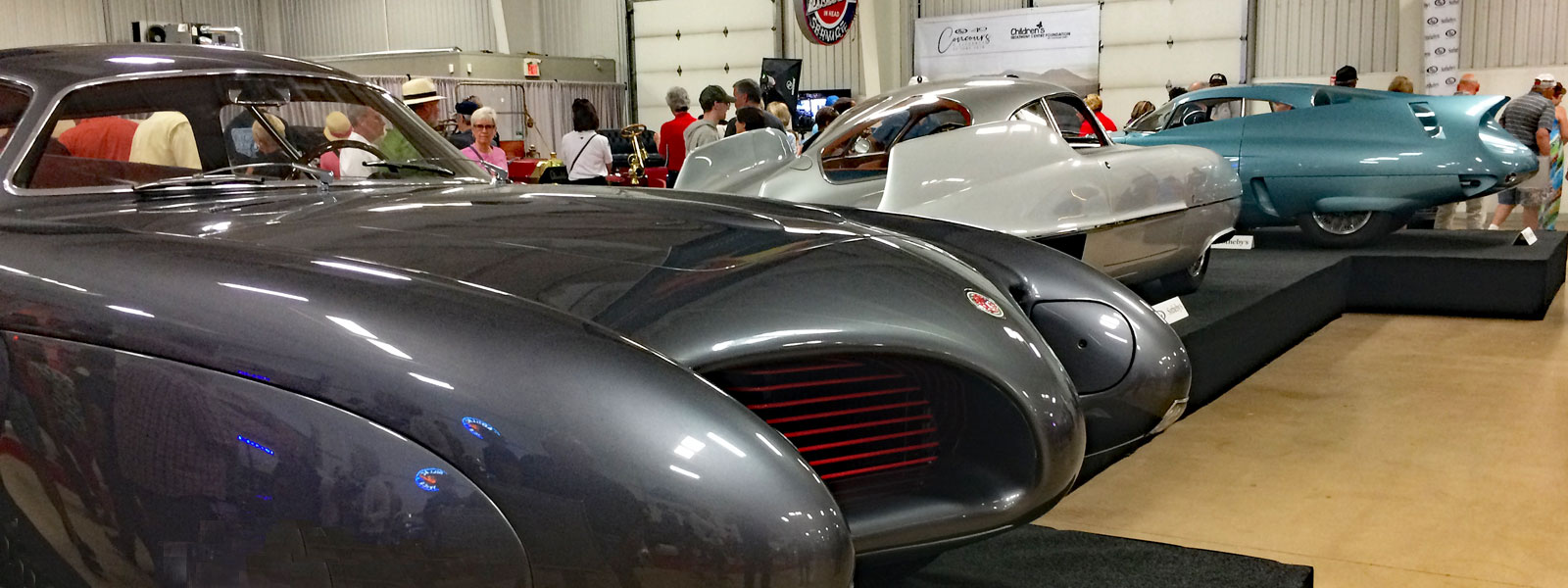
Alfa Romeo BATs #5/7/9 (1953-1955)
Bertone's famous aerodynamic studies
Your first successful project after the war was the custom-bodied MG that you joint ventured in 1952 with that American — S. H. Arnolt.
We could not live for long dependent on Italian dealers and their new business practices. So I tried to build relationships with foreign manufacturers and importers. First I bought two chassis from MG, just to see if there was a possibility to work with foreign concerns. And right away at the opening of the Turin Auto Show in 1952, I found myself standing next to an American, a typical Texan complete with cowboy hat and boots, and a blinding ring stone on his finger. This Mr. Arnolt approached me and asked: "You are Bertone, right? I want these two cars." Gladly I would have sold both. But I was obliged to tell him that there might be a problem. My objective was to get MG to commission a couple of hundred examples.

Alfa Romeo Giuletta (left) and
Giulia Sprints 1954-1965
How did you get this English-Italian project off the ground?
I drove with Mr. Arnolt to England, to convince the reluctant MG management of my idea's merits. The English were concerned about my model competing with theirs, but Mr. Arnolt's salesmanship convinced MG management that my production of a small series based on their chassis could in no way detract from the demand for their own product. We brought gifts for all, clocks for the secretaries, and a fantastic Gorgonzola in the trunk. But the cheese lover at MG was not there. We had to leave it in their refrigerator, even though there were many protests about the smell. Eventually and in consort with Arnolt I obtained an agreement with MG to produce a series of my models.
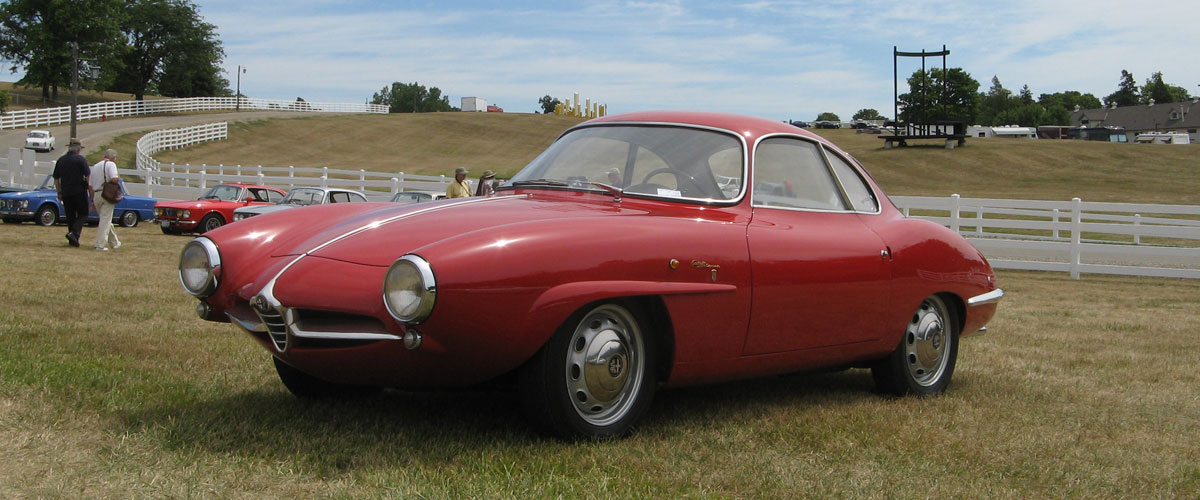
1959 Alfa Romeo Giuletta Sprint
Speciale (early "low nose")
That MG project lead to the Giulietta?
I have to make something clear first. At this time a representative arrived one day from Finmeccanica Italia, more exactly IRI (Institute for Industrial Redevelopment) — in other words, the nationalized Italian industry, which consisted of various industrial sectors. Finmeccanica was the one for machinery and transportation.
The president of IRI was very worried that they were not producing enough of the right kind of vehicles to pay back their loan guarantees. It was his opinion that the Giulietta had to enter production quickly, since it had been in Finmeccanica's plans to sell these for 1,850,000 Lira. It was critical that Finmeccanica solve this production problem because it was putting IRI in severe financial circumstances due to its inability to get Alfa's facilities redeveloped for Giulietta production. Then another representative of Finmeccanica was sent, this time Rudolf Hruska. Because we had worked together at Abarth and Cisitalia we were already friends. At the head of Alfa was Franco Quaroni, who came from Pressing Steel. As chief of Alfa, he was responsible for the delay of Project Giulietta.

1959 Maserati 3500 GT
The Giulietta represented the first series production for you. What kind of difficulties did this transformation of your workshops present — from low volume custom body production to a volume production plant?
With the Giulietta Sprint we achieved the ambitious goal of transforming ourselves from a low volume coach builder to a real body fabrication plant with commensurate quality control and finishing facilities. Then finally, as such, were we capable of bidding on production contracts from the automobile industry.

1961 Ferrari 250 GT
(Nuccio Bertone's personal GTO)
Showing the Giulietta at the Turin Automobile Salon in 1954 was a fantastic publicity coup. Right at the start of the show, to my great surprise, Alfa's upper management sought me out to plead their case that I double the volume of Sprint production. I would have been happier to discuss a contract and delivery program of several years to be able to afford to acquire the necessary means of higher production. But they did not want to do that, they simply wanted to extend their purchase order and did not want to enter into a long-term contractual agreement.

1961 Aston Martin DB-4GT "Jet"
p>
How did this request to double Giulietta Sprint production come about?
There was a conflict between Hruska and Quaroni. Hruska was convinced that this automobile’s sensational reception at the Automobile Salon foretold a promising reception by the buying public. On the other hand, Quaroni did not believe it would be that successful, instead he wanted to produce only enough to satisfy IRI's requirement to repay the moneys borrowed. This involved a production of 500 units. Hruska insisted that at least a thousand be built and Quaroni finally gave in. Because of the uncertain future of this project, I had to produce each Sprint using hand-fabrication methods. But to comply with the production timetable I had to soon risk my own capital on acquiring expensive production fixtures and tooling. This was necessary to boost daily production between 30 to 40 units per day. It was a great risk, because this investment not only required all of the capital the company could raise, it also required everything the family had.

Alfa Romeo GTV 1964-74
Then the Giulietta project represents for you a dangerous walk on a tightrope?
If this project didn’t succeed, everything the family had gained over decades of work, would have been lost. I do not know if I would do it again today.
Your willingness to take that risk does show your faith in the Giulietta Sprint.
In this context I think back with great satisfaction on an encounter with Quaroni. Franco Quaroni was a real unfriendly and uncultivated man, one I did not like to deal with. But then I had to meet with him to discuss the wins and losses on individual models. With one model we would lose money, with another we would lose even more, but the Giulietta Sprint brought profits — mostly because of our investment in fabrication and finishing facilities. I still remember how high the profits were. It was 87,000 Lira, at a vehicle price of 1,750,000 Lira. This number I mention here for the first time. So I said to Quaroni, we must finally conclude a contract. But he was strictly opposed, he liked our less formal purchase order agreement.
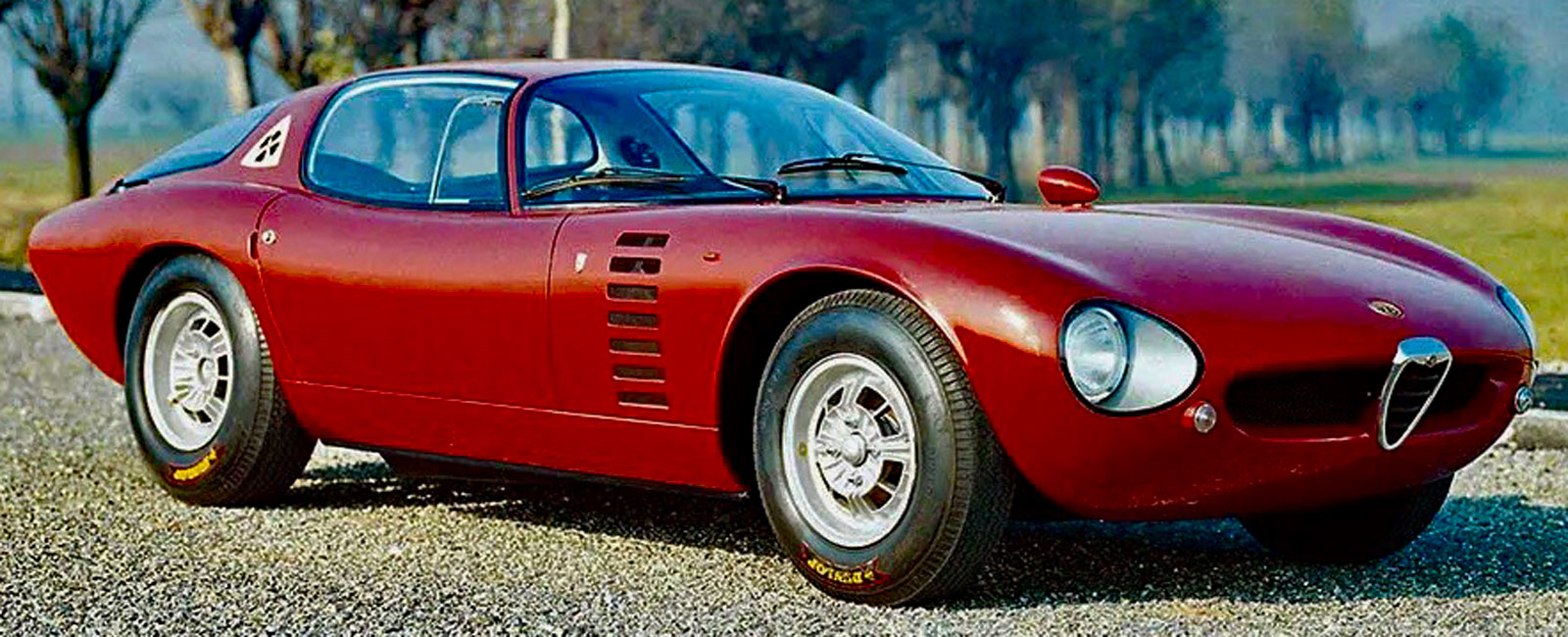
1965 Alfa Romeo Giulia
Conguro
The first prototypes of the Sprint were hatch-backs. Why was it never built in this form?
The time for this concept was obviously not right. The buyers of Alfa Romeos were not comfortable with the idea of opening practically half the car from the rear. So we settled on a small trunk lid instead.
There were no technical reasons?
Certainly the solution for the hatch-back introduced some problems, especially, in hindsight, the compromised rigidity of the chassis, because that panel between the wheel wells tied the upper part of the chassis together. But a decision to go with this concept would have resulted in a solution.
The Giulietta Spider was developed and built by Pininfarina. Was it a defeat, that your competitor won this job?
Our company was not prepared to deliver a minimum of 2,000 Spiders to the United States. We spoke with Pininfarina about that. We both built concept models, but for their unveiling to Max Hoffman, who instigated the concept for a Spider in the first place, we removed our respective emblems, so it would not be so obvious from which house the concepts originated. I also tried to develop a Cabriolet variant of the Coupe but it never entered production.
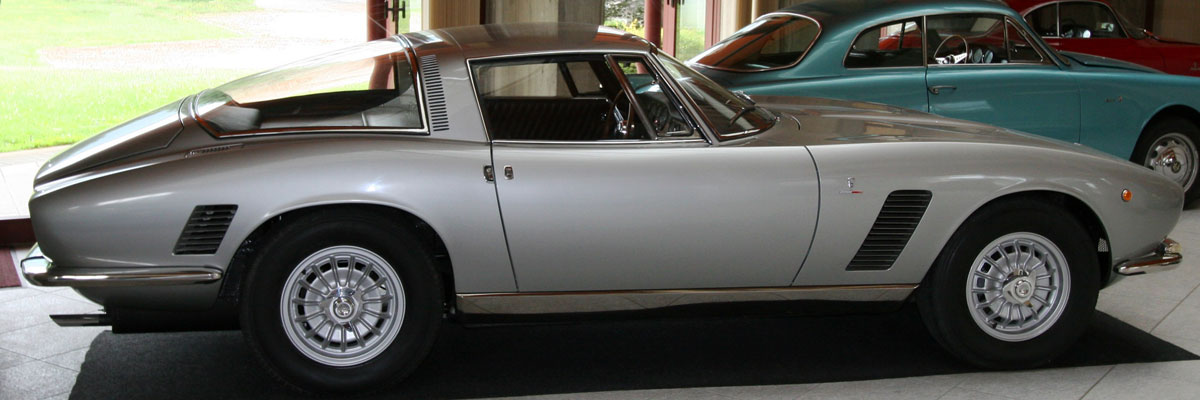
1965 Iso Grifo
After the Giulietta Sprint, was there an automobile that you would place on the same level of importance?
There were several cars which were very important and significant, but none were as important as the Giulietta Sprint. To these others, I would count the Fiat 850 Spider and the Fiat X1/9, if only for the production numbers. At that time I worked first for Fiat and no longer with Alfa Romeo. The break with Alfa Romeo came when they accused me of designing the Montreal in 1967 and then selling the same design elements to Lamborghini for their Marzal. This was of course totally absurd because they certainly were very different.

1971 Lamborghini Muria SV
In what sense do automobile designs of the 1950s differentiate themselves from today’s designs?
Italian and indeed European design in the 1950s continued to be influenced above all by American designs. Even today Americans prefer large cars. Back then they were six meters long., three meters hood and three meters trunk — and in between a small, uncomfortable interior. Principally the Americans influenced the exterior form. Their Baroque shapes were transferred to European autos. In the 1960s and 1970s European lines became more clear. Especially the modern Italian design with its simple and clear lines that were adopted in America as classic, because it conveys onto the volume an encompassing harmony.

Alfa Romeo Montreal
1971-1977
(Unknown website photo)
Which automobile do you use for your everyday driving?
Until my seventieth birthday I drove all the automobiles that we designed, for example the Iso Grifo and the Ferrari 308 GT4, the only Ferrari I ever designed. Earlier I occasionally drove a Ferrari GTO, which I rebodied in my own design. Today I am more relaxed and drive a Fiat Punto, a Citroen XM, a Bertone Freeclimber, and a Skoda Favorit. But it is not a typical Skoda, instead a model with a special red paint and leather interior, which I subsequently transferred to the Favorit for its market introduction.

1975 Lamborghini
Countach P400
You have designed many wonderful automobiles. Is there one which you would have liked to design but did not get the chance?
That makes me think most of all about the designs for Alfa Romeo, in spite of the negative attendant circumstances of our separation, I still have strong positive inclinations toward them. If I had to choose one distinct model today, I would have to say the Java-Cabriolet of Bentley which in a few weeks will be shown at the Geneva Auto Show.
Personal Observations (Peter Pleitner):
Italy's most enduring post war contribution to commerce was design and fashion, and the automobile is its greatest industrial expression. It is informative and rewarding to argue about which automotive coach builder and design house contributed the most, but the outcome is not important. For the greats — Bertone, Ghia, Pininfarina, Carrozzeria Touring, Vignale, and Zagato — each had their moments, some longer and some more lasting than others. But only one, Nuccio Bertone, developed talent, like children, that also went on to found their own companies to continue the process. For it was he who discovered, employed, and mentored Franco Scaglione, Giorgietto Giugiaro, and Mercello Gandini. Each in their time designed, foretold, and inspired the future of the automobile.

Maserati Khamsin 1974-1981
(Unknown website photo)
You can access a definitive overview of Nuccio Bertone's contribution to automotive design, both in concept and series production models, at the company's website shown below. Information about the other Italian coach builders can also be easily found on the web using the key names listed above or at some of the other websites listed below.
The margin here is not long enough to fully illustrate Bertone's incredible contribution to automotive styling. Every day I think of another automobile which I must include. Today it's Lancia's Stratus and the lone Ferrari, tomorrow it'll be the important Fiats. After that it would have to be a half dozen concept cars. Rather than delay publishing this, visit Bertone's website and learn to use Google Images.

